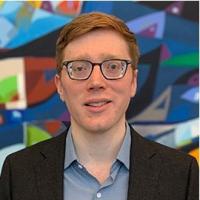SystemX Affiliates: login to view related content.

*To receive email announcements and live stream information for upcoming seminars, please subscribe to the SystemX Seminar/EE310 Mailing list here.
Materials engineered with atomic precision promise unprecedented control over their structure and properties, with profound implications for future device technologies. Atomically thin two-dimensional (2D) materials provide a versatile platform for atom-scale engineering: they exhibit a variety of superlative electronic characteristics, and their discrete layered structures and van der Waals (vdW) interlayer bonding enable them to be grown, patterned, and stacked to generate heterostructured solids with atomically-precise vertical composition and band structure tailored by moiré superlattices. However, current approaches to stacking 2D layers into high-quality vdW heterostructures are slow, stochastic, and artisanal. In this talk, I will discuss the development of automated manufacturing of vdW heterostructures with unprecedented speed, patternability, and angle control. Additionally, I will outline ongoing efforts in my lab to manufacture van der Waals heterostructures with high-quality 2D materials grown at the wafer scale to enable quantum device applications.
Andrew J. Mannix is an assistant professor of Materials Science and Engineering at Stanford University. He completed his B.S. in Materials Science and Engineering at the University of Illinois at Urbana-Champaign, and his Ph.D. in Materials Science and Engineering at Northwestern University as an NSF GRFP Fellow, where he worked on the growth and atomic-scale characterization of new 2D materials. Before moving to Stanford, Andy was a Kadanoff-Rice Postdoctoral Fellow in the James Franck Institute at the University of Chicago, where he developed new methods of atomically-thin nanomaterials growth, processing, and automated heterostructure assembly.


